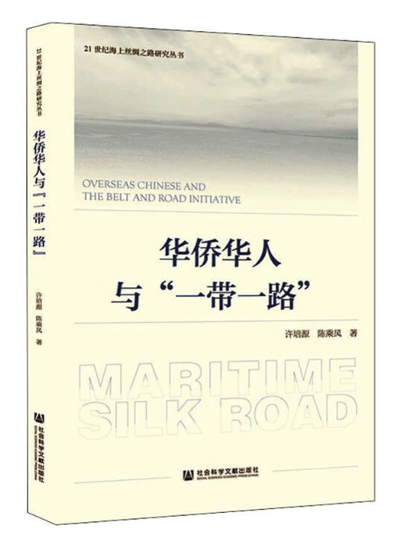Role of overseas Chinese in B&R

Overseas Chinese and the Belt and Road Initiative
Over 40 million of the more than 60 million overseas Chinese in the world are distributed in 65 countries and regions along the Belt and Road (B&R). Overseas Chinese and the Belt and Road Initiative, co-authored by Xu Peiyuan and Chen Chengfeng, scholars from the Maritime Silk Road Institute at Huaqiao University, analyzes the past and present of overseas Chinese and the B&R, and elaborates on their bilateral relationship, roles, current situations, challenges, countermeasures, and suggestions.
The B&R not only requires the construction of international infrastructure and international economic and trade cooperation, but also a strengthening of cultural and people-to-people exchanges among countries along the route, to jointly practice the concept of a community of shared future for mankind. In response, the book analyzes B&R cultural exchanges from the perspectives of expanding and strengthening overseas Chinese media, promoting visa facilitation for Chinese with foreign nationalities, and encouraging personnel exchanges.
Efforts are needed to fully leverage the advantages of overseas Chinese communities, overseas Chinese education, overseas Chinese media, and overseas Chinese opinion leaders (especially businessmen). Overseas Chinese can serve as ambassadors to shape China’s national brand and publicize B&R construction, assisting with B&R policy communication, facility connectivity, unimpeded trade, financing, and people-to-people connections.
Given the multiple interests and demands of overseas Chinese, especially concerning their survival and self-development, it is necessary to coordinate the interests of all parties, reach a consensus, and cooperate for win-win outcomes. For example, overseas Chinese must strike the right balance between serving their country of origin and integrating into their country of residence, between introducing capital and wisdom gained from overseas Chinese experiences and domestic companies’ “going out,” between national overall planning and local specific goals, between spreading Chinese culture overseas and absorbing blended culture, and between core forces and peripheral forces of different types of overseas Chinese.
Faced with profound changes in the world unseen in a century, the further participation of overseas Chinese in B&R construction requires new adjustments. First, overseas Chinese’s businesses are undergoing transformations, with catering, trade, wholesale, and retail industries directly affected. Furthermore, the acceleration of Chinese enterprises’ “going global” brings both cooperation opportunities and competitive challenges for overseas Chinese enterprises. In addition, overseas Chinese communities are experiencing a transformational period, with demographic structures, industrial distribution, and country distribution changing. In particular, as new generations of overseas Chinese grow in number, their closeness and communication methods with their home country need to be adjusted.
Li Huifen is from the office of academic research at Fujian Academy of Social Sciences.
Edited by Yang LANLAN
